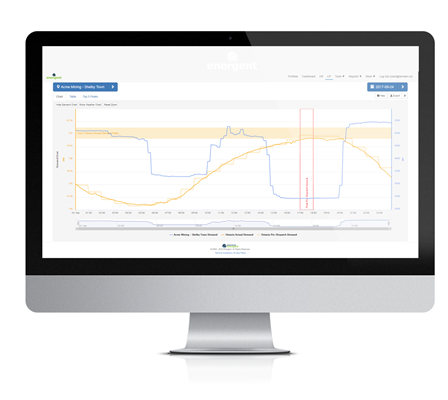It’s common knowledge that Ontario has some of the most expensive electricity rates in the country. Amid the impending Hydro One sale, Ontario industries are afraid their bills will continue to skyrocket. For industries that consume enormous amounts of MW each month, like steel and cement, staying competitive in Southern Ontario is a constant headache. This post will outline some reasons why electricity prices are so high, and how demand management strategies can be used to address your energy spend.
Supply & Demand
If your facility pays wholesale energy prices, these prices change hourly and are affected by supply and demand. Demand peaks are often caused by weather events like heat waves and cold spells. This means more power generators are dispatched to meet the demand, some of which cost more than others (like natural gas). This in turn makes the hourly price higher.
Ontario also has the task of maintaining a massive electricity grid. The distribution and delivery of power is expensive due to our vast size and geographic anomalies. Although cheap nuclear power makes up the majority of Southern Ontario’s power mix, many costs are a result of the grid requiring ongoing maintenance.
Global Adjustment Another reason why your electricity bill is so high is because you pay Global Adjustment (GA). GA is a separate line on your bill used to fund various generation and conservation programs in Ontario. Some might claim that the GA is used to invest solely in renewable energy but this isn’t true. It’s also used to support conservation initiatives, as well as fixed price contracts with baseload hydroelectric and nuclear generators. The latter are compensated through the GA by making up the difference between market and regulated contract prices.
Curtailing energy spend with demand management strategies
 For your enterprise to remain competitive in Ontario, it’s critical to leverage your facility’s demand-side resources. This means reducing electricity consumption during peak usage times. High demand not only makes electricity prices higher, but it also puts pressure on the electricity grid and outages can occur when demand exceeds supply. Reducing load during peak hours helps to stabilize the grid and minimizes the need to activate expensive fossil fuel generators. Here are 3 demand side strategies.
For your enterprise to remain competitive in Ontario, it’s critical to leverage your facility’s demand-side resources. This means reducing electricity consumption during peak usage times. High demand not only makes electricity prices higher, but it also puts pressure on the electricity grid and outages can occur when demand exceeds supply. Reducing load during peak hours helps to stabilize the grid and minimizes the need to activate expensive fossil fuel generators. Here are 3 demand side strategies.
1. Contractual Demand Response: Ontario is the only province in Canada that offers contractual Demand Response (DR) programs. These programs compensate large energy consumers to reduce their electricity consumption during peak usage times. In December 2015, DR is moving towards an auction based market, meaning that DR capacity will be procured through a cost-competitive, annual auction delivered on the IESO energy market. DR can be incorporated into a business energy strategy to reduce operating expenses.
2. Industrial Conservation Initiative: The Industrial Conservation Initiative (ICI) is an Ontario program that can help drastically reduce your Global Adjustment bill. Businesses that participate in the ICI are those that qualify as IESO Class A consumers, meaning that these businesses pay GA based on their electricity consumption during the top 5 peak demands in a 12-month period. The challenge, however, is successfully predicting when these peaks will happen. Integrating a predictive tool into a corporate energy management plan is an effective way to avoid the top 5 electricity demand peaks and consequently reduce your power bill.
3. Managing Overall Demand: Behavioral changes around energy consumption can make a big impact on a facility’s energy bill. Simple changes in your process could save you significant amounts of money, which is especially important for facilities that want to develop competitive per unit costs. Curtailing non-critical loads like HVAC during peak hours, or checking the efficiency of your equipment can help to reduce electricity costs. Be sure to work with your utility to understand your monthly demand charges.
If you’re an industrial or commercial enterprise looking to recoup GA costs or implement a DR program, Rodan Energy can help develop a strategy that’s right for you.
[gap height=”30″]




